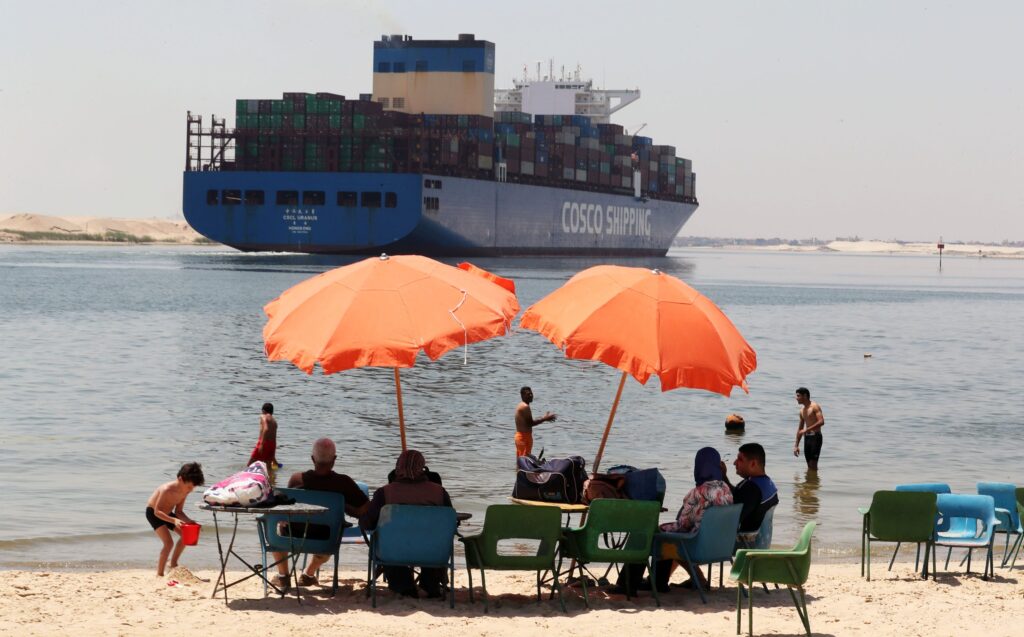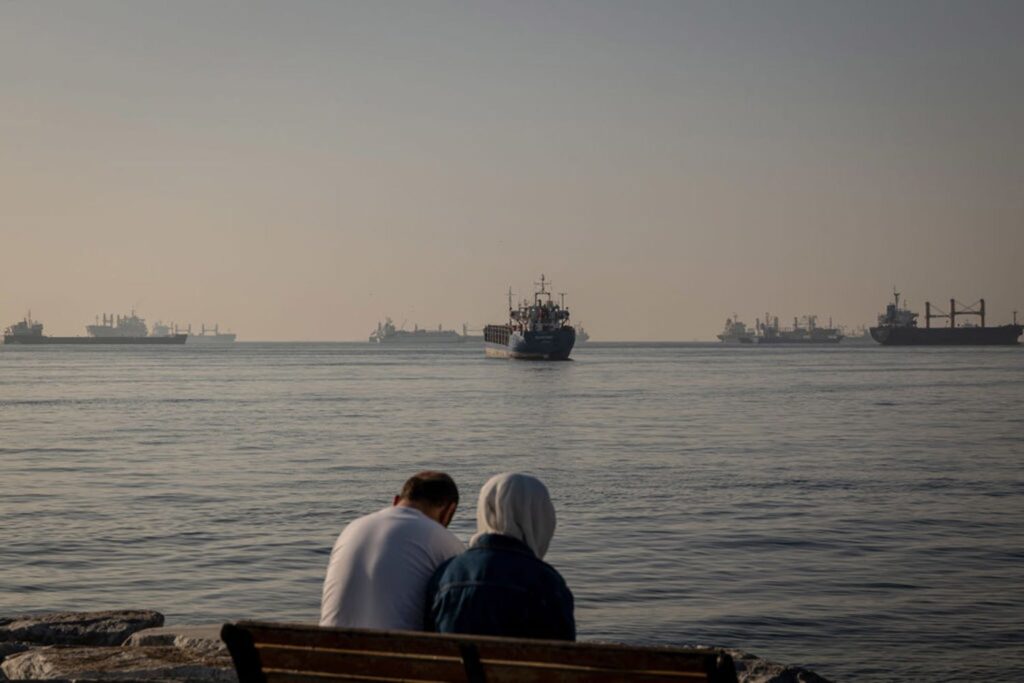Disaster Capitalism Revisited

One of the big takeaways of the COVID-19 pandemic is that we need to enhance resilience. This applies to pretty much every dimension of what has become known as the polycrisis. We hear calls for greater cyber resilience, climate resilience, democratic resilience, supply chain resilience and so on. But what is missing from all the resilience chatter is that powerful corporations have reaped record profits thanks to global shocks.
War, pandemic and climate disasters have sent the prices of essentials like shipping, energy and food spiking, making it the worst of times for the many, but the best of times for the companies in charge. As long as disaster profits spiral out of control, there can be little hope for resilience. The collateral damage of allowing prices to explode in the face of external shocks is that companies lack incentives to become more resilient to future calamities. Which firm could be expected to prevent a situation that brought the best financial results in decades or even a century?
If we are serious about resilience, the profit motive of individual companies needs to be aligned with the goal of resilience. Companies’ pursuit of profits is the most powerful force in our economy. Trying to go up against it is like trying to make an airplane fly while ignoring the forces of gravity. If prices are not allowed to explode in response to shocks, the only possibility left for firms to safeguard profit flows is to ensure that their sales volumes do not collapse. In other words, the supply resilience of individual companies becomes aligned with the goal of economy-wide resilience. Simply put, price regulation and windfall profits are necessary in the name of resilience.
If we get repeated rounds of disaster profiteering of the type we have witnessed in recent years, the result will be disaster capitalism on steroids instead of enhanced resilience. This goes way beyond what Naomi Klein described as “disaster capitalism” more than a decade ago. Klein forensically traced the profits that security firms and disaster response service providers were making off of wars and extreme weather shocks. In an age of overlapping emergencies, it’s not just the firms directly involved in disaster management, but the industries at the heart of our economic system that reap record profits as the essentials of life and production are hit by shocks.
One such essential sector is shipping. Whether you like it or not, we are living in a globalized world and international supply chains are the lifelines of our economies. This means that everything is connected through oversea shipping. In a recent paper my coauthors and I stress tested the impact of the price shocks that followed Russia’s invasion of Ukraine across 71 different sectors of the US economy. We concluded that commercial infrastructure, such as shipping, was one of the strategic areas that are too important to ignore because of their potential impact on inflation and economy-wide stability. Along similar lines, the IMF found that the rise in shipping costs associated with the end of COVID-19 lockdowns in 2021/22 had large effects on inflation, even more important than the price shocks in food and oil.
In March 2021 the Ever Given, one of the giant vessels carrying goods from Asia to Europe and the US, blocked the Suez Canal for six days. It became a meme all over social media. Ever Given showed for everyone to see how a local bottleneck can let whole swathes of the economy grind to a halt. Almost one third of global container shipping used to flow through the Suez canal. The blockage came on the back of already very major dislocations in global shipping. Due to the pandemic, key ports in China temporarily shut down. Truck drivers fell sick and were in short supply in the US. Congestions at the chokepoints of the ports of LA and Long Beach were epic, causing massive delays.
After decades of mergers following on the heels of deregulation, just eight carrier groups manage more than 80 per cent of the world’s shipping fleet. They are the survivors of years of price wars in which companies took a bet that controlling the industry would eventually pay back. With the pandemic, their moment had come.
The largest among the shipping giants, Maersk, has been around for 120 years. At the height of the global shipping crisis in 2022, the company recorded the “best financial results in its history.” But Maersk is by no means alone. In the wake of the emergencies of pandemic and the Russian war on Ukraine the shipping giants reaped record-breaking profits. The chart of their profits looks like a tsunami wave with a sixty-fold increase. Some go as far as to claim that the container giants manipulated the market to drive up prices. Even if they did not, there can be little doubt that they were in no rush to overcome the congestions and bottlenecks that presented themselves as a once-in-a-century opportunity for the shippers.
Once the pandemic bonanza came to an end, the forecast for the shipping giants darkened. People had spent a lot of money on consumer goods while stuck at home and now started to tighten their belt under pressure of inflation. Meanwhile, the congestions in ports lifted and the window of opportunity for record freight rate closed. 2024 was meant to be a painful season in shipping.
But climate change, geopolitical confrontations and conflicts came to the rescue for freight rates. By late 2023, the World Container Index had roughly returned to where it was in 2019. But thanks to the drought in the Panama Canal, the continued impact of the war in Ukraine for Black Sea shipping and most importantly the escalation of the war on Gaza and the Houthi attacks in the Red Sea, freight rates have increased threefold. This renewed price explosion happened even though the shipping industry has been warning against overcapacity.
Not being able to ship through the Suez Canal means that ships from Asia to Europe and the US have to go around the African continent instead, much prolonging the journey and hence increasing the costs. But the stock market still thinks the overlapping crises are good news for shipping companies. The Marine Shipping Index is at an all time high, outperforming the stock market index of the world’s largest companies, the S&P 500. Analysts have predicted a windfall for some carriers for a while.
The risk of an all-out war in the Middle East is rising. After by and large holding steady, oil prices have also started to edge up—another essential sector that reaped record profits in recent years of crises. It’s unlikely the crisis in the Red Sea by itself will set off an inflationary spike comparable to what we have seen since the pandemic, but if it further escalates and coincides with additional shocks (due to extreme weather events, for example), then inflation might well return.

One key lesson politicians and central bankers should learn from the recent inflation is that their preferred weapon for dealing with inflation—interest rate hikes—is a paper tiger to fight shockflation unleashed by supply chain shocks, bottlenecks and sectoral demand shifts. But does this mean that policy makers and central banks should weather sectoral shocks? This question will keep coming back in an age of overlapping emergencies. The shipping crisis is just one case in place. And the answer is no.
Policy makers should not entrust the considerable risk of economic dislocations from freight rate explosions to a handful of companies that control the systemically important shipping industry. And the same applies to all essentials for the production and circulation of goods and livelihoods. If economic “resilience” is to be more than a polite talking point, policy makers should act when prices and profits in essentials explode. In times of geopolitical clashes and climate disaster the price mechanism is bound to fail. Water is not flowing back into the drought-ridden Panama canal in response to price signals. Wars don’t stop because freight rates shoot up.
How about the demand side? Are price explosions necessary to allocate scarce resources in a disaster? Price increases certainly help in convincing some market participants to pull out. But a lot of demand for essentials like shipping cannot be delayed and during disasters there is enormous uncertainty. In this situation, prices are likely to overshoot. They are not simply an efficient signal as the neoliberals would have it. In an extremely concentrated market like shipping, it is in fact fair to assume that gigantic companies are rationing to privilege long-standing clients. In fact, Maersk, reported exactly this in an earnings call during the pandemic-induced disruptions.
For all these reasons, when there are shortages in essentials, prices are not the efficient allocation mechanism that they are assumed to be in stabler times. Of course, shipping companies have to cover the costs of longer journeys caused by having to sail around Africa to deliver Europe-bound goods. Shipping is also a highly cyclical business. So companies need to recoup losses and low earnings from more straightened times. But when profits explode in an emergency, there is a risk that economic stability and resilience is sacrificed to the interests of the companies who happen to control a critical sector like shipping. In fact, the price overshooting can also harm their business in the medium run as it can encourage overcapacity sending prices crashing when the emergency is over.
Windfall taxes—that is, taxes on large unexpected profits—are a potential policy response to a situation like this. But the trouble is that the economies affected by shipping price explosions are unlikely to have tax authority. A pragmatic alternative could be a limit to the rate at which freight rates can be increased during major disasters that could be enforced via insurance companies, just like the price cap on Russian gas. To render the shipping business viable this could also be complemented with a suitable price floor when the disaster is over.
Such a price policy might sound like “communism” to sceptics. In fact, it used to be US policy to regulate shipping like a utility. In return for being exempted from anti-trust policy, the carriers were under strict supervision by the shipping board including on pricing.
No doubt the best way to address the potential economic dislocations from the Red Sea crisis is an end to the war on Gaza and peace in the Middle East—and inflation and economic resilience risks are way down on the list of reasons for that. But, even in the hopeful scenario where this would be achieved, we are still in a world of overlapping emergencies. Climate change is a reality and geopolitical tensions are mounting. To enhance economic resilience, disaster profiteering must be ruled out.


